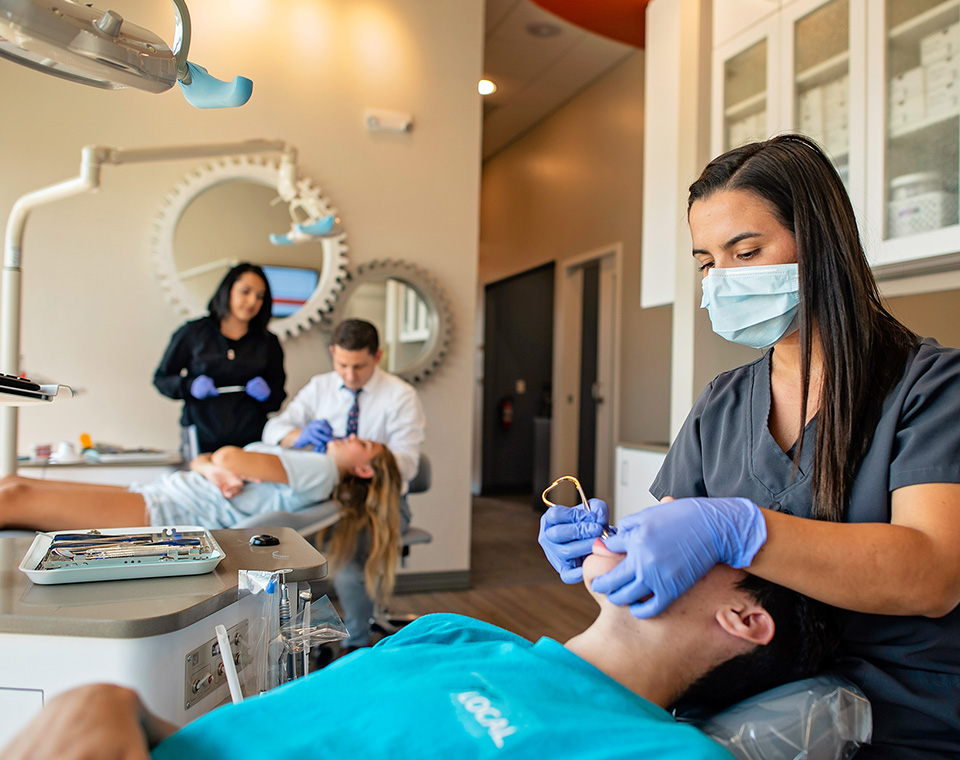Are Braces Better Than Invisalign For Teenagers?

Navigating the world of orthodontics can be complex, especially when it comes to choosing the best option for teenagers. Two of the most popular options available today are traditional braces and Invisalign. Both are designed to straighten teeth and improve oral health, but each comes with its own set of advantages and considerations. In this article, we’ll explore the question: Are braces better than Invisalign for teenagers?
Orthodontic treatments are a rite of passage for many teenagers, and the decision between braces and Invisalign can impact not just their smiles, but their confidence and lifestyle as well. Let’s delve into the pros and cons of each to help you make an informed choice for your teen.
Understanding Braces and Invisalign
Before we compare the two, it’s essential to understand what each treatment involves.
Traditional Braces
Traditional braces have been around for decades, and they’ve come a long way in terms of comfort and aesthetics. They consist of metal brackets that are glued to the teeth, connected by wires that are periodically tightened to shift the teeth into the desired position.
Teen Invisalign
On the other hand, Invisalign for teens is a newer technology that uses a series of clear, removable aligners to gradually move teeth. These aligners are custom-made using 3D computer imaging technology and must be worn for at least 22 hours a day for optimal results.
Effectiveness in Straightening Teeth
One of the primary concerns for any orthodontic treatment is its effectiveness. Both braces and Invisalign are capable of treating a wide range of dental issues.
Braces
Braces are very effective for complex dental problems, including severe crowding, malocclusions, and misaligned bites. They are constantly at work, which can lead to more efficient treatment in some cases.
Invisalign
Invisalign, while effective for mild to moderate dental issues, can also treat some more complex cases. However, the success of Invisalign relies heavily on the wearer’s commitment to keeping the aligners in for the required amount of time each day.
Comfort and Aesthetics
When it comes to comfort and appearance, many teens might have a clear preference.
Comfort
Braces can cause some discomfort, especially after tightening appointments. The brackets may also irritate the inside of the mouth. Invisalign aligners are made of smooth plastic, which tends to be less irritating to the cheeks and gums.
Aesthetics
For teenagers who are self-conscious about their appearance, Invisalign’s clear aligners are less noticeable than traditional braces. This can be a significant advantage for their self-esteem during these formative years.
Lifestyle Considerations
The impact on a teenager’s lifestyle is a significant factor to consider when choosing an orthodontic treatment.
Dietary Restrictions
With braces, there are dietary restrictions to avoid damaging the brackets and wires. Foods that are too hard, sticky, or chewy are usually off-limits. Invisalign aligners are removed before eating, so there are no dietary restrictions, which can be a big plus for teens.
Oral Hygiene
Maintaining good oral hygiene is crucial during orthodontic treatment. Braces can make brushing and flossing more challenging, requiring more time and effort. Invisalign aligners are removed for cleaning, so teens can brush and floss as they normally would.
Sports and Activities
For active teens involved in contact sports or musical instruments, braces can pose a risk of injury or discomfort. Invisalign aligners can be removed during these activities, potentially making them a safer and more comfortable option.
Treatment Time and Compliance
The duration of treatment and the need for compliance can vary between braces and Invisalign.
Treatment Time
Treatment time with braces is usually predictable, and since they are non-removable, compliance is not typically an issue. Invisalign treatment time can be comparable to braces, but only if the aligners are worn as directed. Failing to wear the aligners for the required amount of time each day can extend the treatment duration.
Compliance
Compliance is a crucial factor with Invisalign. Teenagers need to be responsible enough to wear their aligners as prescribed and keep track of them when removed. For forgetful or less disciplined teens, braces might be the better option to ensure treatment success.
Cost Considerations
The cost is always an important consideration when investing in orthodontic treatment.
Braces vs Invisalign Cost
The cost of braces and Invisalign can vary widely depending on the complexity of the case, the length of treatment, and geographic location. Generally, Invisalign can be more expensive than traditional braces, but prices have become more competitive over time.
Insurance and Payment Plans
Many dental insurance plans cover a portion of orthodontic treatments, and both braces and Invisalign are often included. Additionally, most orthodontists offer payment plans to help manage the cost over time.
Making the Decision
When deciding between braces and Invisalign for your teenager, it’s essential to consider their individual needs, lifestyle, and preferences. Consulting with an orthodontist is a critical step in making an informed decision.
Orthodontic Consultation
An orthodontist can assess your teen’s specific dental issues and recommend the most effective treatment. They can also provide a realistic expectation of treatment time and costs associated with each option.
Teen’s Input
Including your teenager in the decision-making process is vital. Their willingness to comply with treatment, care for their orthodontic appliance, and their comfort level with the aesthetic appearance of their treatment option will play a significant role in the success of the treatment.
Conclusion
In the debate of braces vs Invisalign for teenagers, there is no one-size-fits-all answer. Each option has its benefits and drawbacks, and the right choice depends on the individual needs and habits of the teenager in question.
Braces are a tried-and-true method that may be preferable for more complex dental issues, while Invisalign offers a discreet and flexible option for those concerned about appearance and lifestyle impact. Ultimately, the decision should be made in partnership with a trusted orthodontist, taking into account the teenager’s unique situation.
Embrace the journey towards a healthier, straighter smile, whether it’s through the traditional route of braces or the modern approach of Invisalign. Your teenager’s smile is an investment in their future, and with the right orthodontic treatment, they can achieve results that will last a lifetime.


